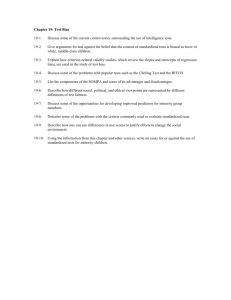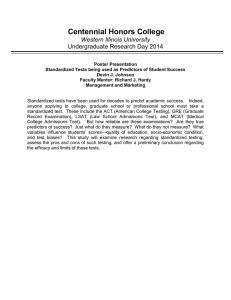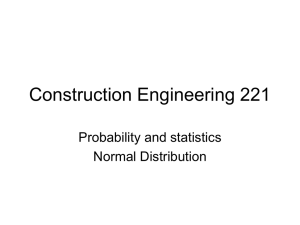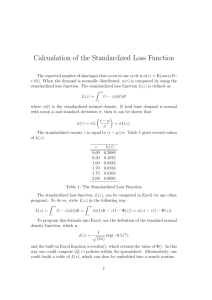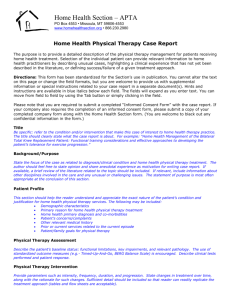File - Kendra D. Clark
advertisement
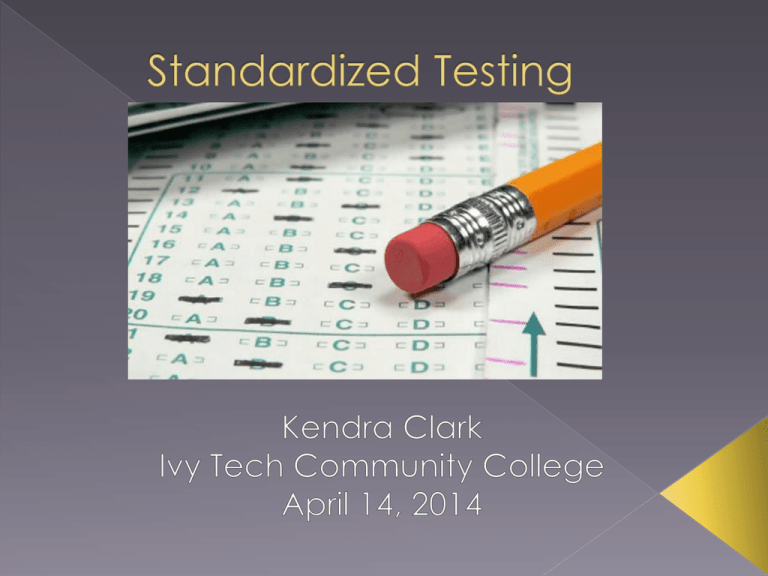
Description: The teacher works with others to create environments that support individual and collaborative learning, and that encourage positive social interaction, active engagement in learning, and self motivation. Rationale: I chose this standard mainly because it encourages positive social interaction with classmates about the different issues in education that are going on right now. The research motivates us to be engaged and learn about the many controversial things in our future careers. Standardized tests have been a part of American education since the mid-1800s. Their use skyrocketed after 2002's No Child Left Behind Act (NCLB) mandated annual testing in all 50 states. US students slipped from 18th in the world in math in 2000 to 31st place in 2009, with a similar decline in science and no change in reading. Failures in the education system have been blamed on rising poverty levels, teacher quality, tenure policies, and increasingly on the pervasive use of standardized tests. -Proponents argue that standardized tests are a fair and objective measure of student ability, that they ensure teachers and schools are accountable to taxpayers, and that the most relevant constituents – parents and students – approve of testing. -Opponents say the tests are neither fair nor objective, that their use promotes a narrow curriculum and drill-like "teaching to the test," and that excessive testing undermines America's ability to produce innovators and critical thinkers. PROs Different types of students in different regions can be easily compared by using a common platform Test grading is computerized, leaving little to no room for human error No possibility of bias/discrimination Focuses on “essential” content and skills CONs Federal funds are normally only given to schools who perform well Memorizing facts, formulas, and steps does not accurately show a student’s ability Teachers must “teach to the test” almost all year round, narrowing the curriculum and hindering in-depth learning Competition among schools and school districts Causes severe stress on the younger students, who worry about how well they will perform or what effect the test will have on them Older students do not take them seriously because they know it will not affect their grade Discriminatory against non-English speakers and students with special needs Emotional intelligence or creativity not taken into account Has not improved student achievement It is expensive, and costs have increased since NCLB (No Child left Behind), shortening state education budgets Multiple choice is an inadequate assessment Used to reward or punish teachers Open-ended questions are graded by underpaid temporary workers with no educational training This picture shows average test scores based on just family income. Coincidence? On Mar. 14, 2002, the Sacramento Bee reported that "test-related jitters, especially among young students, are so common that the Stanford-9 exam comes with instructions on what to do with a test booklet in case a student vomits on it.” The current use of No. 2 pencils on standardized tests is a holdover from the 1930s through the 1960s, when scanning machines scored answer sheets by detecting the electrical conductivity of graphite pencil marks Finland topped the international education (PISA) rankings from 2001-2008, yet has "no external standardized tests used to rank students or schools A three-year study completed in Oct. 2010 by the Gesell Institute of Human Development showed that increased emphasis on testing is “making children feel like failures now as early as PreK" Is the Use of Standardized Test Improving Education in America? (November 1, 2013) Retrieved from www.standardizedtests.procon.org (T. Tracy, personal communication, April 12, 2014 and February 8, 2014 for Teacher Interview Project). Pros and Cons of Standardized Testing (September 26, 2011) Retrieved from http://www.buzzle.com/articles/pros-andcons-of-standardized-testing.html
